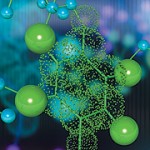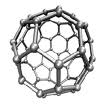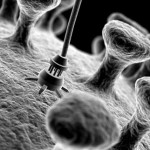 The National Academies have promised a report by the end of January 2012 on priorities (both short- and long-term) for studying the health, safety, and environmental effects of nanotechnology. According to the National Academies, this report will address the following matters: the properties of engineered nanomaterials; methods and technologies for “detecting, measuring, analyzing, and monitoring” engineered nanomaterials; what studies are needed; what testing methods need to be developed; the models for predicting impacts that should be developed; research priorities; and the criteria for evaluating research progress. In its “Statement of Task,” the National Research Council has explained:
The National Academies have promised a report by the end of January 2012 on priorities (both short- and long-term) for studying the health, safety, and environmental effects of nanotechnology. According to the National Academies, this report will address the following matters: the properties of engineered nanomaterials; methods and technologies for “detecting, measuring, analyzing, and monitoring” engineered nanomaterials; what studies are needed; what testing methods need to be developed; the models for predicting impacts that should be developed; research priorities; and the criteria for evaluating research progress. In its “Statement of Task,” the National Research Council has explained:
“The committee will take into consideration current and emerging uses of engineered nanomaterials and the scientific uncertainties related to physical and chemical properties, potential exposures, toxicity, toxicokinetics, and environmental fate of these materials.”
I will discuss the report when it is issued. More information on the National Academies’ research strategy is available at
http://dels.nas.edu/Study-In-Progress/Research-Strategy-Environmental-Health/BEST-K-08-01-A#
This is a promising developing to look forward to, but as with all things, the proof is in the, er, nanopudding (sorry, couldn’t resist). Initiating a task such as this is daunting, with the result a framework for assessment, not the ultimate assessment. But it is a necessary step in what is certain to be a long process.
In a separate project, the National Academies are considering more than the health, safety, and environmental effects of nanotechnology. Pursuant to the Nanotechnology Research and Development Act (Pub. L. No. 108-153), Congress has mandated triennial reviews of the National Nanotechnology Initiative (NNI). The National Academies’ National Research Council convened a committee to conduct the second such triennial review, and its report is due in 2013. Much of the review will entail examining the economic impact of nanotechnology and ways to measure the value of nanotechnologies.
Information on the triennial review project is available at
http://www8.nationalacademies.org/cp/projectview.aspx?key=49409
The two projects discussed in this post demonstrate the efforts to address the two important aspects of progress in the uses of nanotechnology – understanding the health, safety, and environmental effects, and measuring the economic benefits of nanotechnology.
 In a June 9, 2011, memorandum to the heads of U.S. executive departments and agencies, entitled Policy Principles for the U.S. Decision-Making Concerning Regulation and Oversight of Applications of Nanotechnology and Nanomaterials, the White House confirmed its commitment to a “science-based” approach to health and safety matters related to nanotechnology. The memorandum issued from the Office of Science and Technology Policy, the Office of Management and Budget, and the Office of the U.S. Trade Representative. The memorandum described its approach as
In a June 9, 2011, memorandum to the heads of U.S. executive departments and agencies, entitled Policy Principles for the U.S. Decision-Making Concerning Regulation and Oversight of Applications of Nanotechnology and Nanomaterials, the White House confirmed its commitment to a “science-based” approach to health and safety matters related to nanotechnology. The memorandum issued from the Office of Science and Technology Policy, the Office of Management and Budget, and the Office of the U.S. Trade Representative. The memorandum described its approach as Listening to the speakers at the American Bar Association section webinar on the subject of “Nano Governance: The Current State of Federal, State, and International Regulation,” discussed in
Listening to the speakers at the American Bar Association section webinar on the subject of “Nano Governance: The Current State of Federal, State, and International Regulation,” discussed in 
 In my previous post, I indicated that I would be moving on to discuss the relevancy arm of the Daubert admissibility test. It turns out I have a few more thoughts about the reliability arm.
In my previous post, I indicated that I would be moving on to discuss the relevancy arm of the Daubert admissibility test. It turns out I have a few more thoughts about the reliability arm. This post continues the discussions in earlier posts about evidentiary
This post continues the discussions in earlier posts about evidentiary  My
My  On November 22, 2010, EPA submitted a proposed rule under Section 8(a) of TSCA to the Office of Management and Budget for its review. The proposed rule includes reporting requirements for manufacturers of nanoscale materials and could be published in the Federal Register for public comment in December.
On November 22, 2010, EPA submitted a proposed rule under Section 8(a) of TSCA to the Office of Management and Budget for its review. The proposed rule includes reporting requirements for manufacturers of nanoscale materials and could be published in the Federal Register for public comment in December.
